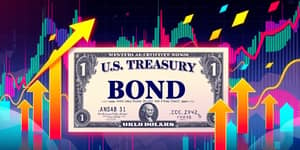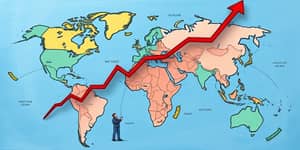
In 2025, foreign exchange markets have become the battleground where global capital reallocates in real time. As the dollar’s value swings dramatically, investors and corporations alike are forced to adapt strategies, rethink risk, and embrace innovation.
From multinational boardrooms to individual portfolios, the ripple effects of currency moves demand both caution and creativity. Understanding the forces at play and the tools available can transform volatility into opportunity.
The U.S. Dollar Index (DXY) has plunged nearly 9% year-to-date, marking one of the greatest single-year drops since 2008. This shift reflects mounting trade tensions, fears of stagflation, and a reevaluation of America’s economic leadership.
For investors, a weaker dollar can supercharge foreign returns, but only when paired with robust global diversification strategies and precise risk controls.
Unpredictable tariff policies have injected volatility into currency markets. U.S. duties on Chinese imports have soared to 125%, with Beijing’s counter-tariffs at 84%.
Meanwhile, concerns about slowing growth and rising prices—stagflation—erode confidence in the greenback. Corporations are now revisiting supply chains and reshoring to mitigate FX risks.
With a weakening dollar, the Morningstar Global Markets ex-US Index has surged roughly 14% through late May, while U.S. equities remained flat. This divergence underscores how FX effects can eclipse underlying stock gains.
Investors who embraced non-U.S. assets found that currency translation added a powerful tailwind to returns. Yet those neglecting hedging saw profits erode at home.
In today’s environment, essential risk management tool is no longer optional—it is mandatory. Currency hedging can protect gains and stabilize cash flows, especially when macro risks dominate.
Key strategic moves include:
By combining currency overlays with geographic and sectoral diversification, investors can build resilience against sudden shifts in exchange rates.
Multinational giants have sounded alarms over earnings hits tied to the dollar’s drop. Amazon forecasts a $2.1 billion currency-related loss this year, while McDonald’s and Coca-Cola cite similar headwinds.
These warnings highlight the need for robust treasury risk controls that align hedging programs with operational cash flows and financial reporting cycles.
Amid growing doubts about U.S. policy stability, central banks are diversifying reserve holdings away from the dollar into the euro, yen, Swiss franc, and gold. This shift reflects a search for alternatives that can withstand geopolitical and trade uncertainties.
As reserve diversification accelerates, market participants must stay attuned to capital flow rotations and changing safe-haven dynamics.
Several intertwined forces will continue to shape currency volatility:
These risks demand vigilant monitoring and agile policy responses from both investors and corporate treasuries.
Currency volatility shows no signs of abating as geopolitical rifts and macro uncertainties persist. The demand for sophisticated FX risk management will only grow stronger.
Investors and corporations should prioritize:
By embracing these measures, market participants can transform volatility from a threat into a source of alpha generation.
Ultimately, understanding and anticipating currency dynamics will be a defining skill for successful international investing in 2025 and beyond. The currencies of uncertainty will continue to chart new pathways for capital flows—those prepared to adapt will reap the greatest rewards.
References













